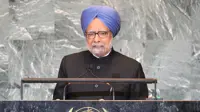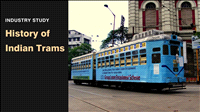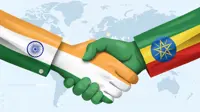Footloose and wire-free
By Probir Roy | 01 Sep 2003
 Mumbai:
The ''China phenomenon'' in the wireless world is now
being witnessed in India — marked by an explosion
of the wireless market. The results are in — and
the numbers are impressive.
Mumbai:
The ''China phenomenon'' in the wireless world is now
being witnessed in India — marked by an explosion
of the wireless market. The results are in — and
the numbers are impressive.
Cellular operators in India are expected to earn $8 billion in revenue by 2007, up from $1.5 billion in 2002. Data, which currently contributes $0.8 billion towards their revenue, is slated to expand to $1.36 billion — or 17 per cent of the total revenues — by 2007, according to Gartner. India has a little over 16-million cell phone users today.
This booming scenario is true for Asia as a whole. Asia now accounts for 36 per cent of the world''s telecom market (up from 21 per cent in early 1991, and expected to reach 50 per cent in 2007), 33 per cent of the world''s Internet user base (225 million Internet users, or an average of 6.3 users per 100 inhabitants), 95 per cent of the world''s 3G mobile users, 47 per cent of the world''s ADSL broadband Internet users, and seven of the world''s top 10 most profitable telecom operators (International Telecommunications Union, 2002). It also has the world''s largest regional user base of cell phones and is also a pioneering player in cutting-edge 3G and 2.5G markets.
Opportunities
and challenges
The wireless explosion has opened up a wide spectrum
of opportunities and challenges for different segments
of society: consumers, technology vendors, the media,
businesses and regulators.
Consumers
Although stock market valuations project gloom-and-doom
scenarios for a number of wireless players in India,
consumers have never had it so good in terms of access
options, pricing competition and communications convenience.
 They
are rapidly taking to data services like SMS due to
the low cost of messaging, ease of use in noisy environments,
the ability to communicate unobtrusively during meetings,
communication options during urban traffic grid locks
and long-train commutes, roaming agreements across nations,
and the proliferation of premium services (downloadable
ring tones, news alerts, sports scores, stock updates,
targeted ads).
They
are rapidly taking to data services like SMS due to
the low cost of messaging, ease of use in noisy environments,
the ability to communicate unobtrusively during meetings,
communication options during urban traffic grid locks
and long-train commutes, roaming agreements across nations,
and the proliferation of premium services (downloadable
ring tones, news alerts, sports scores, stock updates,
targeted ads).
Technology vendors
Business travellers, managers at multiple sites, students
on campuses, sales personnel, and even families using
multiple online devices at home are the target market
for the burgeoning wireless networking industry.
Patents for standards, protocols, chipset designs and wireless applications are major source of revenues on the intellectual property rights (IPR) front. The challenge is to generate and protect IPR while also making it affordable for use by players at various points of the wireless value chain.
For instance, in Asia, China, the world''s largest cellular market with over 180-million wireless subscribers, has a lot to gain by influencing existing wireless IP standards and even creating its own ones, such as TD-SCDMA, which is less costly than CDMA2000 and WCDMA systems.
Media
industry
Cross-fertilisation between wireless and other media
like television and the Internet is providing new sources
of data traffic and evolving newer and more lucrative
business models.
The show Who Wants to be a Millionaire drew over a million SMS messages from viewers in just one day for a network operator in Europe. In some markets, MTV lets users vote via SMS for which video they want to watch next. At a P2P level, over 150 million SMS messages were sent in 2002 on Father''s Day in the Philippines. Valentine''s Day is another big draw for SMS users.
 Many
of the leading portals (like Yahoo in Singapore and
India) have launched SMS services for instant messaging
via gateways on their websites, and downloadable ring
tones as well (Catcha in Malaysia). The Indian Express
newspaper even tied up with the Arab news channel Al-Jazeera
to provide users with SMS news alerts during the recent
US-Iraq war.
Many
of the leading portals (like Yahoo in Singapore and
India) have launched SMS services for instant messaging
via gateways on their websites, and downloadable ring
tones as well (Catcha in Malaysia). The Indian Express
newspaper even tied up with the Arab news channel Al-Jazeera
to provide users with SMS news alerts during the recent
US-Iraq war.
McDonalds in Australia has effectively used permission-based SMS marketing to promote incremental sales during lean periods. Cleo magazine in Singapore also offers SMS ads for members who sign up for the Cleo Club service operated by N2N Consulting.
Telecom
operators
Mobile operators are seeking to increase ARPU (average
revenue per user) by promoting P2P traffic (which accounts
for an estimated 90 per cent of today''s SMS usage) as
well as premium SMS offerings (such as group chat, buddy
lists, permission marketing, machine-to-machine communication).
Payment plans can be per message, by data volume, by subscription, or some combination of the above. Prepaid plans are becoming popular among budget-conscious parents who want to control their children''s usage of mobile phones, travelling businessmen, and providers of premium services.
But numerous questions still haunt mobile operators. During hard economic times, will users cut back on SMS usage — or cut back on movies and other recreational spending? What is the optimal pricing ratio for SMS in comparison with voice tariffs? How can the SMS user base and SMS traffic be boosted — while also increasing ARPU? How should the transition be managed between SMS and MMS, between GSM and 2.5G or 3G? What is the best revenue-sharing model between content providers and mobile operators?
Businesses
Wireless media have significantly transformed organisational
communications and business workflow, ranging from calendering
and alerts to customer relationship management and logistics
coordination. At the multi-enterprise collaborative
supply chain level, mobile applications can improve
speed, cost and accuracy considerations in procurement,
supply-chain execution (fulfilment) and measurement
(asset visibility), and service management (field-force
automation).
 While
PCs and workstations have come under some criticism
for ''tethering'' knowledge workers to their desks, wireless
technologies may be the perfect answer to ''mobilising''
the workforce by letting them capture and harness key
information and knowledge attributes wherever they are,
whenever they want, and however they want.
While
PCs and workstations have come under some criticism
for ''tethering'' knowledge workers to their desks, wireless
technologies may be the perfect answer to ''mobilising''
the workforce by letting them capture and harness key
information and knowledge attributes wherever they are,
whenever they want, and however they want.
Strategies focused on knowledge mobilisation via handheld devices and wireless networks — ranging from Pocket PCs and cell phones to WLANs and RFID tags — can take knowledge management to an entirely new plane, putting road warriors and field workers in the centre of the information and communications world via mobile portals and on-demand expert services.
Regulation
and legislation
Beneath the hype and hope of mass consumer market adoption
and enterprise uptake of wireless technologies, major
tectonic shifts are taking place on another front: IPR,
or the creation of technologies, content and applications
that can be licensed for lucrative royalties at various
points of the wireless ecosystem.
Wireless operators, chipset manufacturers, application developers, content aggregators and the entertainment industry are now in bed together trying to figure out how to ensure that licensing of mobile content can build healthy revenue streams.
 Music
publishers, according to industry estimates, received
over $71 million by supplying handset ring-tones last
year. The challenge for the content industry is to exploit
such new markets, while also safeguarding IPR and avoiding
''mobile Napsterisation.''
Music
publishers, according to industry estimates, received
over $71 million by supplying handset ring-tones last
year. The challenge for the content industry is to exploit
such new markets, while also safeguarding IPR and avoiding
''mobile Napsterisation.''
The rapid proliferation of multiple wireless technologies along with the realities of scarce spectrum can lead to numerous challenges for regulators, ranging from license allocation to the setting of tariffs.
The issues raised will need to be systematically addressed in the next few years, and perhaps even proactively, to pre-empt what has happened in the broadcast business, where legislation is attempted to be back-ended into a dynamic technology-centric business, albeit with disastrous results.
The
need of the hour in India is a comprehensive convergence
policy and a law knitting together communications, broadcast
media and content like in the US.
Latest articles
Featured articles

Hariman Sharma lets apple travel to India’s warmer climes
10 Feb 2025
Apple, which was the preserve of the cooler Himalayan region in India, is now everywhere – in the East, the West and the South - thanks to one enterprising Himachal farmer, Hariman Sharma.

The cost of neglecting water transport
03 Feb 2025
Inland water transport is widely recognised as a cheaper and environment friendly mode of transport and, as per a report prepared by RITES

Crypto Currencies Trying To Undermine Global Financial System
27 Jan 2025
US President Donald Trump, it seems, is the latest to join the frenzy for personal or corporate currency, with $TRUMP, or what they call a meme coin, giving a further boost to his crypto image.

As costs of saying final goodbyes rise UK families resort to crowdfunding to pay for funerals
By Axel Miller | 16 Jan 2025
The cost of saying a final goodbye to loved ones in the UK has reached a grim new high, leaving families grappling with unexpected financial burdens.

The life and times of Manmohan Singh, former Prime Minister of India
By Cygnus | 28 Dec 2024
On 27th December 2024 India and the world lost one of their finest statespersons in a hundred years. Manmohan Singh, born on 26th September 1932, in Gah, Punjab (now in Pakistan)

The remarkable Ratan Tata
By Kiron Kasbekar | 23 Oct 2024
One newspaper report of Ratan Tata’s passing away showed an old photo of him climbing into the cockpit of a Lockheed Martin F-16 fighter.

Lighter than air, yet very, very powerful
By Kiron Kasbekar | 03 Jan 2024
In March 2013 Chinese scientists pulled off a remarkable feat. They created the world’s lightest aerogel. Tipping the scales at a mere 0.16 milligrams per cubic centimeter – that’s a sixth of the weight of air!

COP28 explained: A closer look at COP28's climate change solutions
By Aniket Gupta | 27 Dec 2023
The 28th United Nations Climate Change Conference, also known as COP28, took place from 30th November 2023, to 13th December 2023, at Expo City in Dubai, United Arab Emirates.

What is a Ponzi scheme?
By Aniket Gupta | 06 Dec 2023
Ponzi schemes have long captivated the public imagination, drawing unsuspecting investors into a web of illusion and deception.
Business History Videos

History of hovercraft Part 3...
By Kiron Kasbekar | Presenter: Kiron Kasbekar

History of hovercraft Part 2...
By Kiron Kasbekar | Presenter: Kiron Kasbekar

History of Hovercraft Part 1...
By Kiron Kasbekar | Presenter: Kiron Kasbekar










